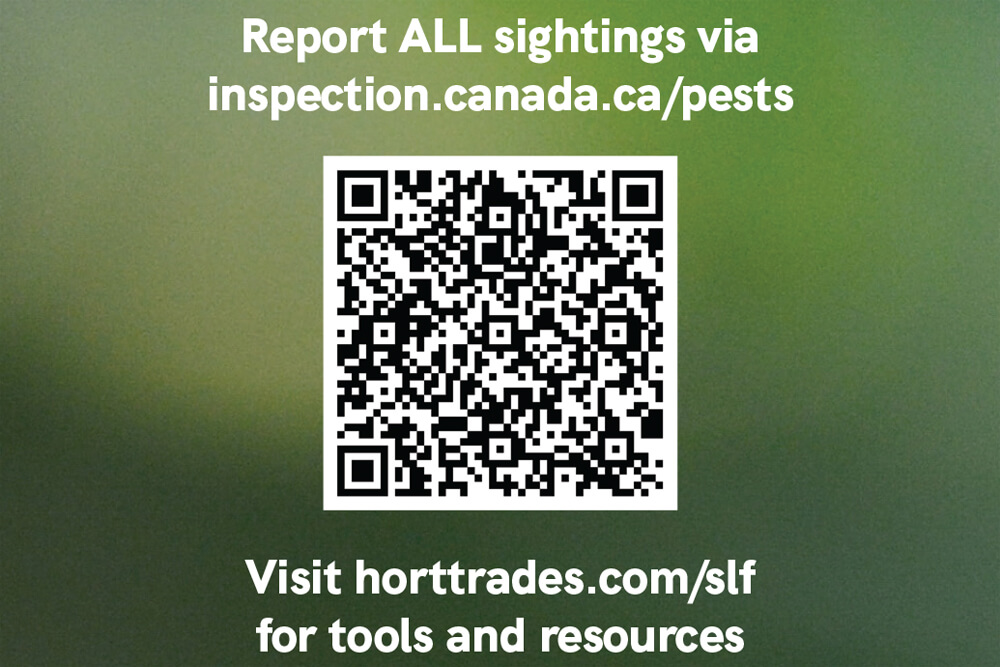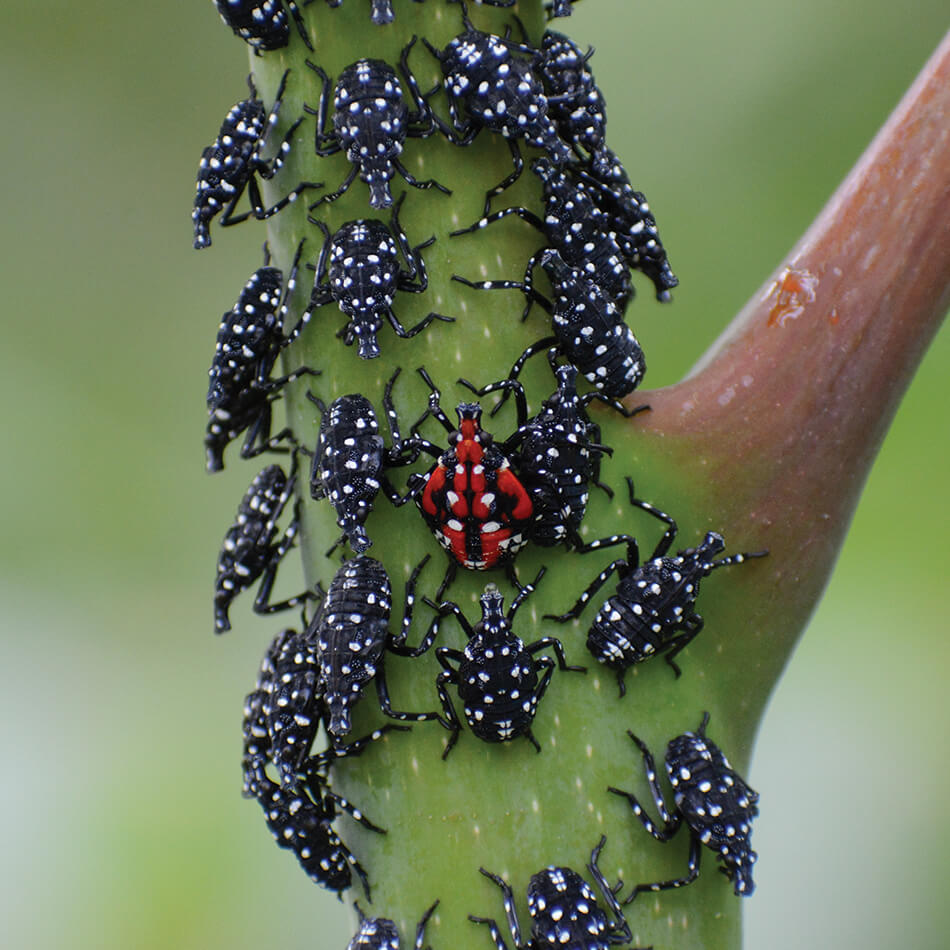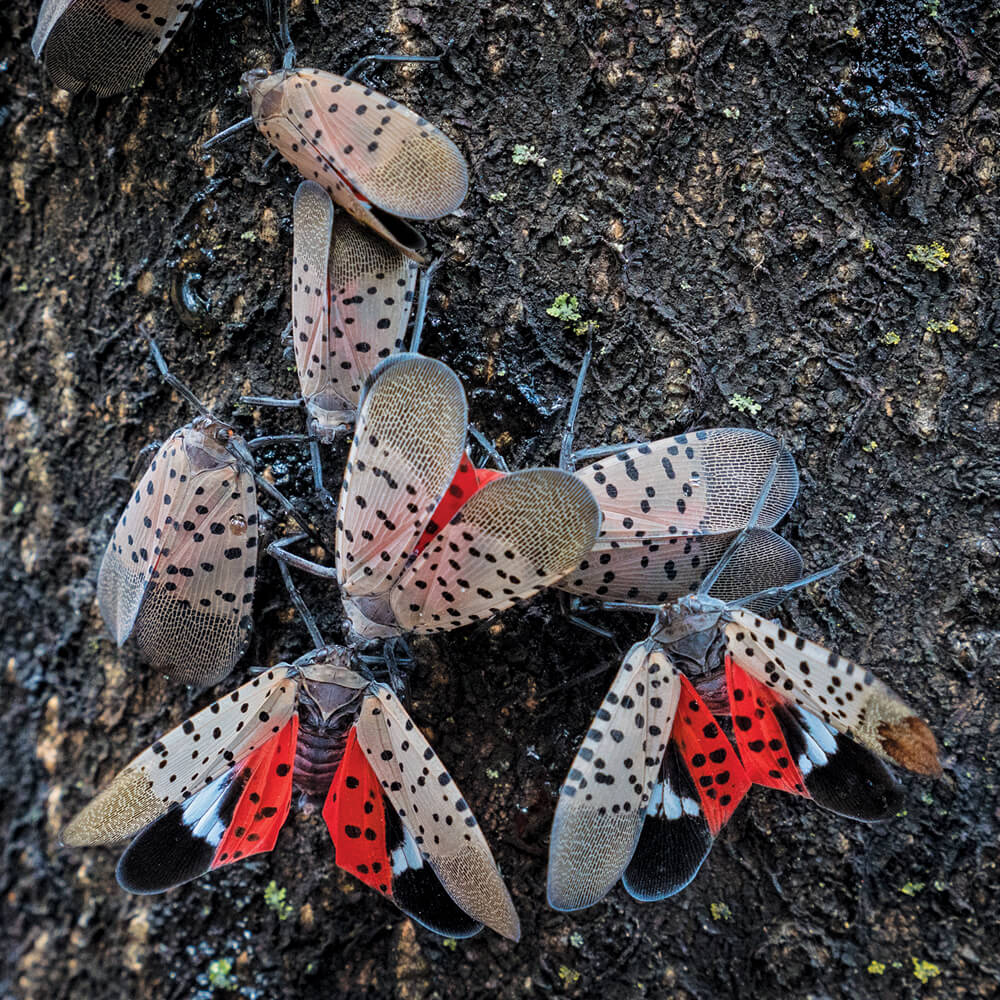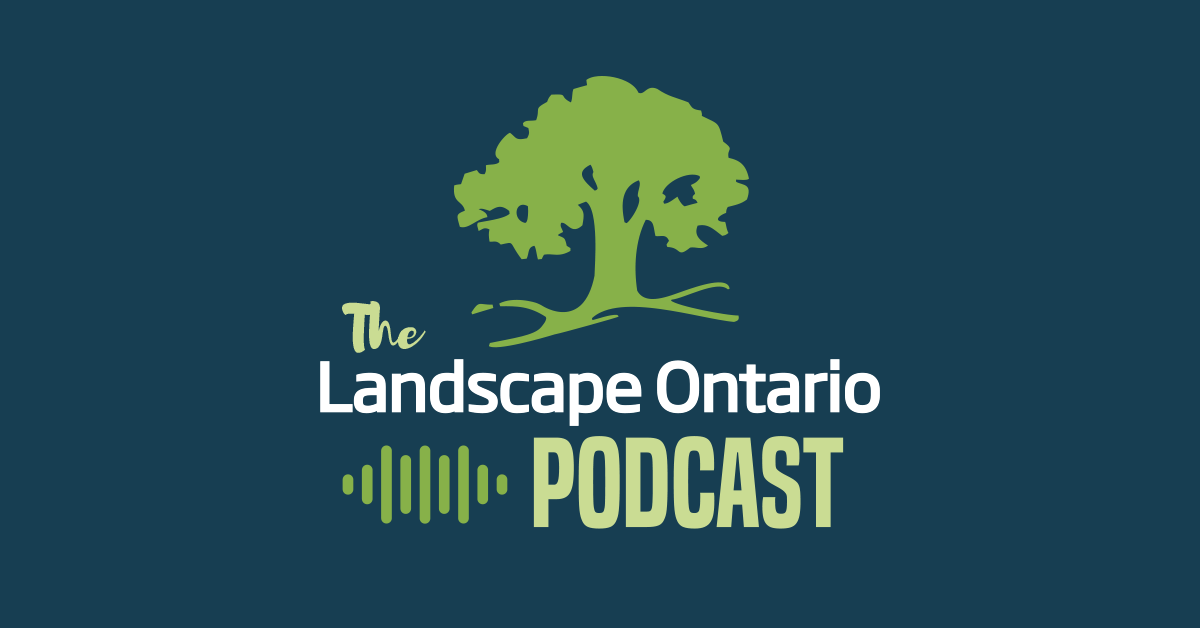September 11, 2025
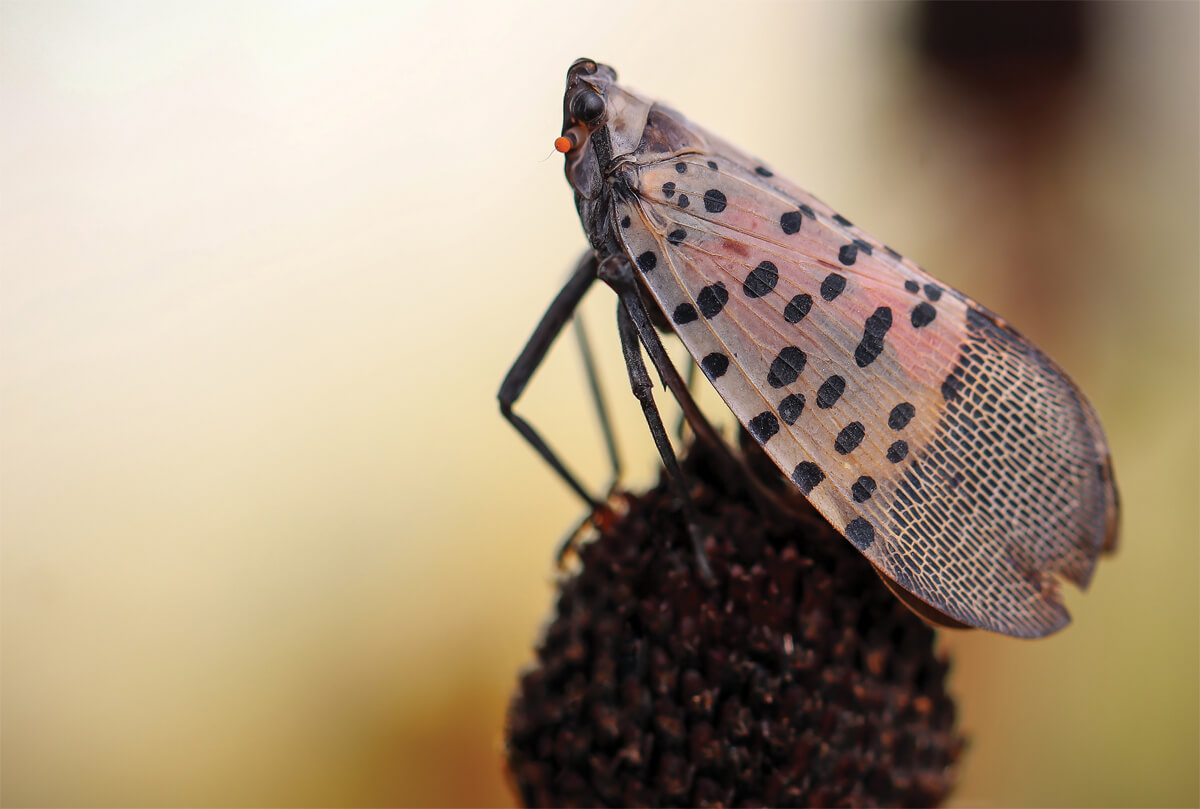
An adult Spotted Lanternfly.
Spotted Lanternfly
Protecting the landscape from an emerging threat
 This interview originally aired on the Landscape Ontario podcast and has been edited for length and clarity.
This interview originally aired on the Landscape Ontario podcast and has been edited for length and clarity.It seems like there’s a new invasive pest to watch out for every time you turn around. Recently on the Landscape Ontario Podcast, Jeanine West joined the show to talk about the invasive Spotted Lanternfly (SLF), a planthopper that’s working its way toward Canada.
West is the grower technical analyst for Landscape Ontario’s Grower Sector Group, has a doctorate in plant pathology and physiology, and studies the impact of insects and diseases in horticulture. We discussed its potential impact on Canada's grape and wine industries, and why early detection is critical. West also shared details on how to identify the insect at various life stages and explained how landscapers can help prevent this pest from becoming established in Canada.
What is SLF and why should we be concerned?
Spotted Lanternfly is an invasive planthopper. It’s an insect that originally came from Asia and it's been in the United States for a number of years now. It feeds on the sap of plants. It is a little bit like an aphid, but quite a bit bigger.This pest prefers tree of heaven and grape vines. We've seen very devastating effects in the United States, and it has actually wiped out some vineyards. We do not have it in Canada yet, and we hope it never reaches B.C. but we do expect that it will come into Ontario. We don't have a lot of tools right now to manage it. The important part will be to slow the spread of it as long as we can.
Why is it so important to detect it early?
There's a pattern with a new invasive where the insect or disease has a period where it's in low numbers. And if you can detect it while it's in that low population stage, it's hard to find, but it's manageable at that stage and sometimes possible to eradicate.And then, the population starts to grow. When it becomes established, the spread of the population goes up exponentially. At that phase, there's no stopping or slowing it down, and it becomes much more expensive to manage. The devastation can be much greater.
This is the perfect time for us to find it, to slow it down. We could actually delay this thing by two, three years even, if everybody was out there with their eyes peeled looking for it. And it would save the grape growers, it would save the costs of management and it would buy us time.
Have we had success with slowing the invasion of other horticulture pests?
We have, actually. One of the big pests for the horticulture sector was boxwood blight. Growers knew about it and were aware of what to do. They destroyed their crops that had it, and were able to eradicate it when they first saw it. That's been huge. Boxwood in Canada is grown and produced in Canada, so we generally have very clean plants across the country.How can you identify the Spotted Lanternfly in its various stages of life?
The eggs are laid between September through later in the fall when the adults die. The egg masses look like a patch of mud. The eggs are laid in rows, covered in something like a paste, and they look grey, beige, maybe a little bit whitish, depending on how soon after they've been laid that you see them. And they lay their eggs on everything, from vehicles to dumpsters to patio furniture and so on.The nymphs are more jumpy, so they're actually hard to catch and see. But if you have, for example, a tree of heaven (which is an invasive plant the SLF prefers) you might find them there. The nymphs start out about half a centimetre long and by the time they hit their fourth stage, they can grow to be almost a centimetre or so long. The early nymphs are black with white spots and a very large mouthpiece. And as they get older and into that fourth stage, they become red with black and white spots, before molting into the adult stage.
The adult stage is probably the most recognizable stage. Those would be visible and present between July and the first really hard frost around November or December. It's got beige outer forewings with really distinctive black spots on them.
They're quite large when they spread their wings, almost as big as a toonie coin. Their back wings have distinctive, very bright red-orange patches. When the wings are folded, you don't see that as much, but you still see those black spots on the beige.
Spotted Lanternfly life stages
What should people do if they spot this pest?
Catch it. Contain it in a box or a jar and don't let it out. If you're able to squish it, that's fine too. Keep the evidence because the government does want to have confirmation of what it is. But, once you've caught it, the most important thing is to report it. The Canadian Food Inspection Agency (CFIA) has a webpage where you can report a sighting. They will follow up, do surveillance in the area, and they will confirm that it was or was not a Spotted Lanternfly. So we are really encouraging people to know what to look for and absolutely report it, because if we know where it is, we can try to slow it down.What kind of damage does SLF cause to plants?
They'll insert their mouth parts and suck out the sap of preferred plants, like grapevines and tree of heaven. For some reason, those plants are very desirable to the Spotted Lanternfly. It will look for a preferred host, but it's hungry, so it will land on other plants and eat along the way. It will eventually move on but you might get some damage to other plants just because they're weakening it by robbing nutrients.It's really important that your garden and landscape plants are well maintained. Water them, fertilize them and keep them healthy because then they can withstand that type of damage. It's no different than aphids on your roses or hibiscus. However, if it was a tree of heaven or a grapevine, the adults will have the capacity to actually kill the plant. So that's where we're really concerned about the grape growers, in Ontario in particular at the moment. In the U.S., they've wiped out entire vineyards.
Are there any biological controls for the Spotted Lanternfly?
At this point, no. It's originally from Asia and is fairly new even to the U.S. Nothing yet that we know of that will manage it or target it. I think over time, predators such as birds or other animals that eat insects might find a liking for it. It's possible, but we think there probably are other technologies that might be better.There might be new chemistries that we can use that are safe and targeted. There's hope in using parasitoids — so particular insects that maybe are effective in Asia against it that can be evaluated and determined if they're safe to deploy in Canada, and not have a negative impact on the rest of the ecosystem. There's a lot of work being done right now on that.
There's a huge amount of research that goes into those kinds of potential solutions way before anything would be utilized naturally. There's a lot going on but first we're looking for how to find it faster. How to spot it. How to slow it down. It's so critical that everyday people learn how to recognize this insect. We need an army. And our army is our citizens of our province. So we're asking landscapers, and people who work in parks, public green spaces, gardens, greenhouses and vineyards to keep an eye out for this pest and report any sightings to the CFIA.
